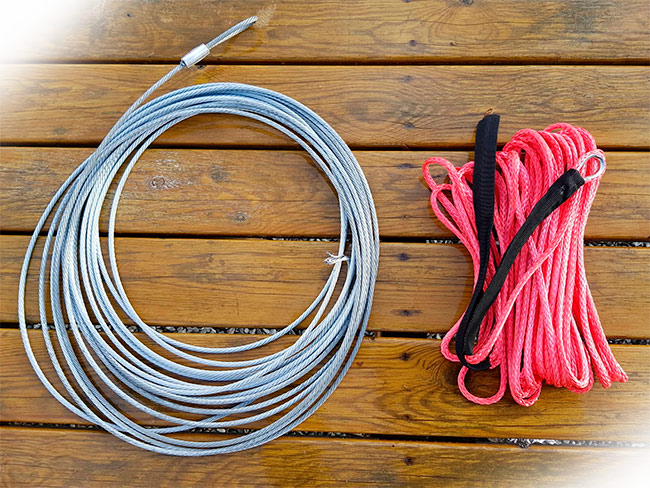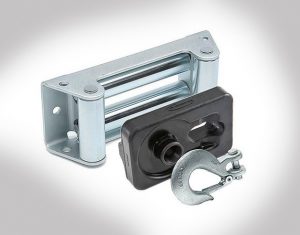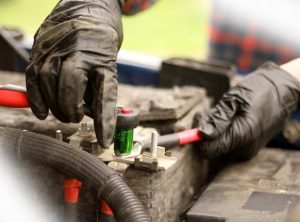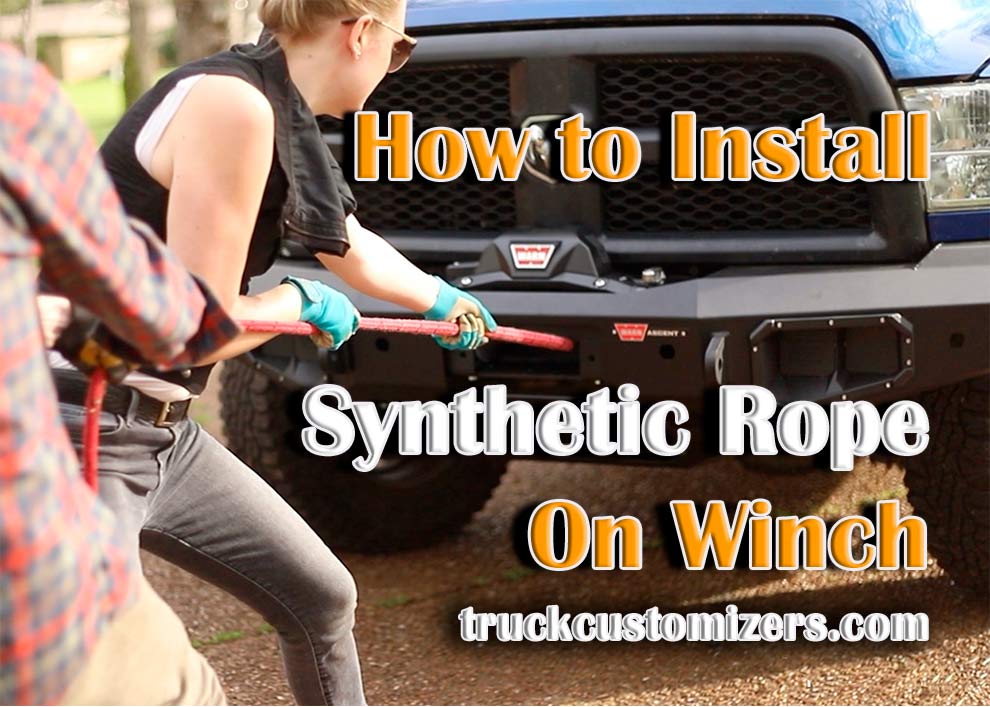Are you a big fan of exploring uncharted lands behind the wheel of an SUV or truck? If the answer is yes, I bet you’ve got a trusty winch installed on the front of your ride. Without it, you won’t be able to pull the vehicle out of mud, slush, or heaps of dust. Now, most winches come with a pre-built steel cable, and, while it is pretty decent, it does wear out over time.
So, if you feel like it’s time for a replacement, I highly recommend going with synthetic rope instead. But wait – can you use rope instead of cable on any winch? The answer is yes, you can, and today, we’ll remove the stock cable, prepare the winch drum, and, of course, learn how to spool synthetic winch rope. Let’s get to it!
Why Choose Rope instead of Cable?
In many ways, synthetic rope is superior to the “traditional” steel cable. But why is that – what pros does it have? For starters, no matter how hard you stretch it, the rope won’t be nearly as dangerous as the cable. Yes, I’m talking about when it breaks. On top of that, in contrast to a steel cable, synthetic rope is 100% safe to handle with no protective gloves. You won’t get any burns (given the rope is of decent quality, of course).

And, on average, synthetic rope lasts longer and doesn’t require any maintenance. All you’ll have to do is store it in a dry place and keep it away from direct sunlight. The rope doesn’t rust, corrode, or degrade over time – cables do. Plus, the rope is lightweight and easy to carry around. I do, however, have to also say that in rough conditions (temperature extremes, lots of dust or mud, rocky terrain), the rope won’t be as effective as the cable.
Getting Started
 Alright, now that we’ve learned about the benefits of synthetic cable, let’s get everything prepared for the installation. I’ve got good news for you: even if you don’t have much experience with aftermarket gear, you’ll be done with the whole process in 15-20 minutes (30 minutes tops). Now, before getting into the thick of it, make sure you’ve got the right rope.
Alright, now that we’ve learned about the benefits of synthetic cable, let’s get everything prepared for the installation. I’ve got good news for you: even if you don’t have much experience with aftermarket gear, you’ll be done with the whole process in 15-20 minutes (30 minutes tops). Now, before getting into the thick of it, make sure you’ve got the right rope.
By that I mean the rope’s breaking strength should be twice as high as the winch’s towing capacity. Otherwise, you’ll probably end up tearing the rope and maybe even damaging the winch. I recommend getting a rope with a loop and a hook at the end – that will make the installation simpler and quicker. Oh, and don’t forget about the fairlead. Essentially, it’s a device that will guide the synthetic rope, preventing it from chaffing and getting stuck.
For rope, you have a choice between an aluminum hawse and a steel roller fairlead. My money is on an aluminum hawse: it is very smooth and will keep the rope in a good shape. Rollers are decent as well, but if you’ve got a couple of extra bucks to spare, go with a hawse. And here’s a list of the required instruments:
- Heavy-duty protective gloves
- A socket wrench
- A decent winch (like a hex key)
Removing the Factory Cable
 Begin by disconnecting the negative battery cable. Next, carefully remove the fairlead. For that, take away the bolt and the locking pin on the hook. If you didn’t get a hook with the rope, you can use the old one. A quick note: even if the fairlead is in great condition and will fit the synthetic rope, it still needs to be removed. This won’t be hard: it is secured by a pair of regular bolts. With that out of the way, disengage the winch motor – just press the switch.
Begin by disconnecting the negative battery cable. Next, carefully remove the fairlead. For that, take away the bolt and the locking pin on the hook. If you didn’t get a hook with the rope, you can use the old one. A quick note: even if the fairlead is in great condition and will fit the synthetic rope, it still needs to be removed. This won’t be hard: it is secured by a pair of regular bolts. With that out of the way, disengage the winch motor – just press the switch.
Now, if you were wondering how to install synthetic rope on Warn winch, remember that this manufacturer uses rotary knobs that you’ll need to turn clockwise. Ok, the cable comes next. Put the gloves on and grab the old steel cable. Keep pulling until it unspools completely. Most likely, the end of the cable will be connected to the drum. In some cases, the cable is mounted with a screw; in other configurations, there’s a slot that keeps it in place.
It shouldn’t be hard to figure this out and to get rid of the old cable. And before you move on to installing the synthetic rope, I recommend checking both the fairlead and the drum. It’s not rare for low-quality steel cables to cause damage to those components over time. If that’s the case, a replacement will be in order.
Mounting the Synthetic Rope
In my experience, the best way to “install” the new rope is to make a knot. As you’ll be putting pressure on it, the knot will tighten. That way, both the rope and the winch will serve you for a long time. The hardest part here is positioning the drum correctly. The mounting hole is located on the right side, and our goal here is to make the rope wrap around it evenly (and, preferably, roll around the drum’s thickest part).
There are two types of winches: ones that turn forward, and ones that turn backward. If you’ve got the first type, position the drum so that the mounting hole is at the bottom. And if it’s the other way around, do the opposite (turn it so that the hole is facing the top). Ok, the tricky part is over. Now just push the rope through the hole and leave at least an inch or two on the other side.
As I mentioned earlier, we need to make a knot. So, turn the drum around, pull the end of the rope a bit, and create a knot, wrapping it around itself. To make the knot really tight, apply pressure to the rope’s short side and pull the longer side. That’s pretty much it for the mounting.
Spooling the Synthetic Rope
Alright, we’re almost there. All that’s left to do is spool the rope. It would be best to have a friend handling the winch while you’re keeping tension on the rope and making sure it’s spooling properly. Lay the rope out and see that each new rope line/winding is touching the previous one. Don’t leave any room between them. And yes, the rope should be going over the short end of the rope that we used to create a knot.
Once you’ve covered the drum in its entirety, start another layer. Again, it’s very important to keep pulling on the rope and applying pressure. Finishing up, don’t forget to install the aluminum hawse. If it’s a different design from your stock system (say, it was a fairlead, not a hawse), the factory bolts won’t fit; so, make sure you get the necessary hardware with the hawse.


